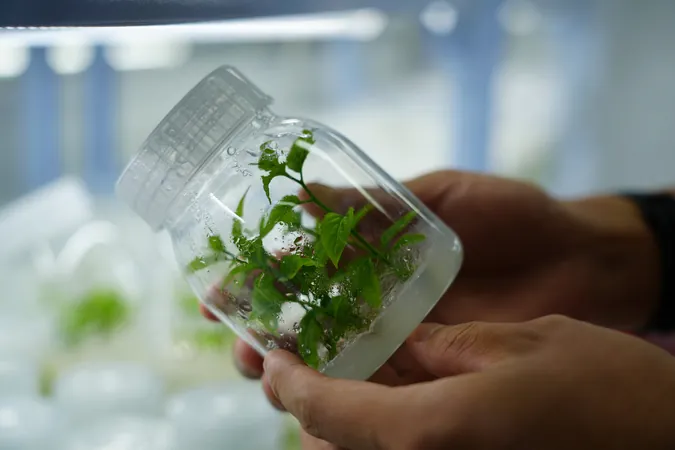
Unlocking the Secrets of Plant Growth: New Discoveries in Bud Development
2025-05-27
Author: John Tan
Revolutionary Insights into Plant Hormones
A groundbreaking study has unveiled the intricate roles of plant hormones, particularly exogenous trans-zeatin (tZ), in shaping axillary bud development in the economically significant tree, Eucommia ulmoides. This research, spearheaded by Professor Wu Lifang from the Hefei Institutes of Physical Science at the Chinese Academy of Sciences, is set to transform our understanding of this crucial plant’s growth.
The Gem of Chinese Flora
Indigenous to China, Eucommia ulmoides is cherished not only for its medicinal attributes and edible parts but also for its rubber-producing capabilities. Despite its importance, molecular studies focusing on its developmental processes have lagged behind, particularly in how external growth regulators facilitate in vitro regeneration.
A Deep Dive into Developmental Stages
Building upon their established regeneration system, researchers delved into the influence of tZ on bud growth by analyzing axillary buds across five developmental stages. Their investigations incorporated advanced targeted metabolomics and transcriptomic analyses, revealing a two-phase development process consisting of an initial induction phase and a subsequent elongation phase.
Deciphering the Hormonal Symphony
Within this study, researchers documented significant fluctuations in hormone concentrations and gene expression patterns following tZ treatment, shedding light on the specific regulatory mechanisms at play during each growth phase. Through weighted gene co-expression network analysis (WGCNA), they identified critical hormone-related gene modules and illustrated the intricate crosstalk among hormones that orchestrate bud development.
A New Era in Plant Research?
Dr. Wang Dacheng, a key member of the research team, articulated the importance of these findings, noting, "This network illustrates how plant hormones communicate during bud growth, offering a clearer picture of the regulatory mechanisms involved." This research not only enhances our understanding of Eucommia ulmoides but also sets the stage for future advancements in plant biology and agricultural practices, potentially paving the way for more efficient cultivation methods.


 Brasil (PT)
Brasil (PT)
 Canada (EN)
Canada (EN)
 Chile (ES)
Chile (ES)
 Česko (CS)
Česko (CS)
 대한민국 (KO)
대한민국 (KO)
 España (ES)
España (ES)
 France (FR)
France (FR)
 Hong Kong (EN)
Hong Kong (EN)
 Italia (IT)
Italia (IT)
 日本 (JA)
日本 (JA)
 Magyarország (HU)
Magyarország (HU)
 Norge (NO)
Norge (NO)
 Polska (PL)
Polska (PL)
 Schweiz (DE)
Schweiz (DE)
 Singapore (EN)
Singapore (EN)
 Sverige (SV)
Sverige (SV)
 Suomi (FI)
Suomi (FI)
 Türkiye (TR)
Türkiye (TR)
 الإمارات العربية المتحدة (AR)
الإمارات العربية المتحدة (AR)